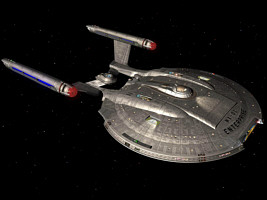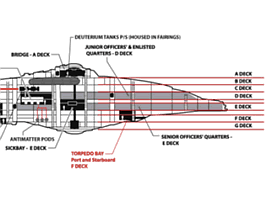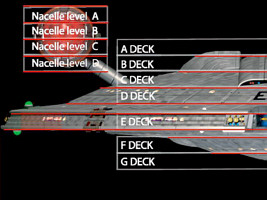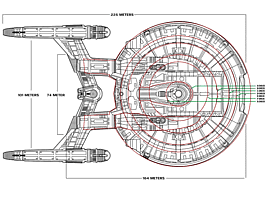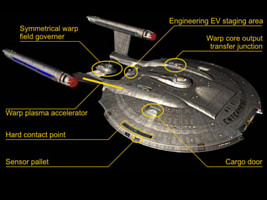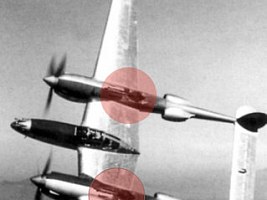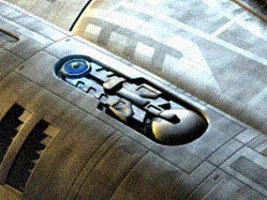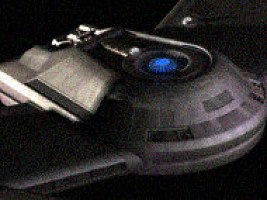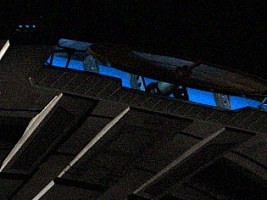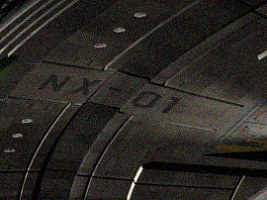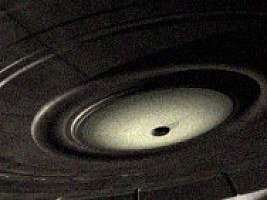A Close Look at Enterprise NX-01
with first-hand information by Doug Drexler
Doug Drexler, the designer of Enterprise NX-01, was very generous in giving us more insight into the design of the ship than I ever would have hoped for. He describes the purposes of many not-so-obvious or concealed details of the ship.
Disclaimer Doug Drexler asks us to remember that the ship's capabilities are determined ultimately by the show's writing staff and producers. Until they actually appear on screen, all diagrams and technical specifications given here should be taken as conjecture.
Design Breakdown
General design approach
One of the reasons why so much of the technology is hidden behind hatches is to allow the authors to determine the ship's capabilities and invent new ones: "The solution for me was a kind of 'Swiss army knife' approach that allows us great diversity in the ship's capabilities and will not conflict with stock footage of the ship (As you know, stock footage is a necessity due to money and time constraints)... The NX-01 has somewhere in the neighborhood of 20 circular ports that a variety of devices including Phase Cannons, antennas and buoys can egress the ship... We have a number of obvious airlocks that Mike [Okuda] conjectured based on his intimate knowledge of the docking ports on the International Space Station."
Saucer structure
Only the saucer volume is inhabitable. The cross-section reveals its structure. There are seven decks, named A-deck through G-deck. The bridge is located on A-deck. The junior officers' quarters are on D-deck. Sickbay, mess hall and the senior officers' quarters can be found on E-deck. Two half-decks are inserted between D-deck and E-deck and between E-deck and F-deck. They contain plasma conduits and access tunnels (not sure whether they will already be called "Jefferies tubes").
Note The cross-section shown here is somewhat more precise than the similar version published on the official Star Trek site in that it includes the (conjectural) matter and antimatter tanks and revised plasma conduits.
Warp drive
Main engineering occupies part of D-deck and E-deck just behind the saucer center. The deuterium tanks are located on B-deck, in the forward ends of the twin hulls. The antimatter pods are on F-deck.
The double hulls, pylons and warp nacelles are uninhabitable. They can only be accessed in environmental suits. The plasma conduits that can be seen in main engineering run from the warp core up to C-deck. The twin hulls contain a three-stage plasma accelerator, something like a big supercharger. The accelerator is what distinguishes Enterprise from other ships of the era and what allows Warp 5. Doug Drexler agrees that, also in the Star Trek Universe, the design of NX-01 may have been inspired by the P-38 aircraft, which had superchargers in the twin hulls too. The first stage is just above main engineering, and is visible from outside as a detail on the top of the twin hulls, the warp core output transfer junction. After three stages, the plasma is fed into the nacelles through the warp pylons, like on conventional starships too. The nacelle housings contain hatches to critical warp engine components which require constant work and tuning. The ship should have to hold in space regularly to retune and clean the engines.
Note Doug Drexler gave me the information in this article before the episode "The Catwalk" was written. So after all the nacelles are inhabitable.
The pod between the twin hulls is not supposed to hold weapons, but a symmetrical warp field governor that regulates the warp field shape that would otherwise break apart at higher warp factors.
Note In "Fight or Flight" it looks like a torpedo is fired from the pod, but the aft torpedo launcher is actually on F-deck in the saucer, like the forward tubes too. Being on the same deck, the launchers may share resources.
Hard connect points
The port (red) and starboard (green) formation lights are located on raised black panels. First of all, this is a homage to the first version of the Enterprise NCC-1701 that had the same details. The black panels are actually hard contacts where the ship is "clamped" to the drydock facility. They are important because tractor moorings are not practical yet. We may assume that the details on the original Enterprise served the same purpose.
Cargo doors
The two large rectangular hatches that can be seen in the top view (port and starboard of the bridge) are facing exact counterparts on the ventral surface. There is a shaft between them through which one could fly right through the ship when the doors are open. Because of a zero gravity environment inside the shaft, cargo containers may be easily handled and transferred to the single decks where they are stored in large balconies along the shaft, acting as shelves. Once a cargo container has reached the desired shelf, it may be given a push, and rollers on the floor would take over the their weight in the gravity well of the deck. 150ft robot arms may be deployed to pull the containers into the ship. There are two of them and they egress through the cargo doors which allow them ready access to the top and bottom of the saucer. The arms are ambulatory and can ride the grid on the ship's surface. The ship also has inspection cars that ride these same rails. Real-life contemporary counterparts can be seen crawling along the surfaces of modern skyscrapers.
Sensors
Sensor pallets are located next to the deflector dish, just forward of the port and starboard saucer airlocks, behind the bridge, forward of the shuttlebays and on the back of the symmetrical warp field governor. The domes on the top and the bottom of the saucer are perimeter and planetary sensors.
Engineering EV staging area
The EV staging area is located at the back of the saucer, with equipment still to be determined. The inspection pod that Archer and Tucker used in "Broken Bow" is stored here too. Like the one next to the lower shuttlebay, there is an observation room above the EV staging area.
Note According to "Terra Nova", Enterprise is supposed to have no more than two shuttlecraft. Doug explains: "In my opinion we have two pods that are on 'hot standby,' and two more that are 'mothballed' and can be made good to go in two days working normal shifts, one day working double shifts."
See Also
A Close Look at 22nd Century Technology - complete analysis of its continuity and plausibility in Enterprise
Navigation Lights on Starfleet Ships - red and green lights across the design generations

Back to Starship Articles index






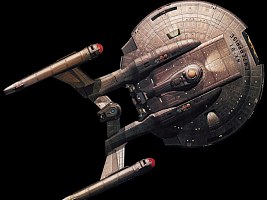
 Top view
Top view